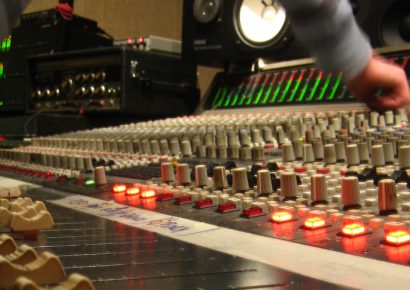FUTURE RETRO
When looking at the instruments being released by Dave Smith Instruments, it’s easy to see how he is recalling so much from his past designs. Yet, at the same time he is one step ahead of so many other manufacturers and designers of today. Ironically, it’s his knowledge of the past that’s placing him ahead of everyone else. We are now in the midst of a full-blown analogue synthesizer renaissance that is seeing a range of manufacturers release new keyboards and re-issues of old ones in compact and cost effective designs. This is a trend that’s been running for the last few years with huge sales going to those that have marketed the idea of analogue cool in the right way. Several years before all this craziness of late, Dave Smith was one step ahead with his Mopho keyboard synthesizer. It really paved the way for units like Arturia’s Minibrute and Korg’s MS-20MINI and enabled them to find footing in the marketplace. The bizarre thing is that while many of you have probably not even seen or heard a Mopho, you probably own keyboards that have followed in its wake and been inspired by it.
BRIGHT IDEA
The suggestion that many music producers might have missed the Mopho when it hit the scene in 2008 is laughable when you look at the instrument itself. This has got to be the loudest keyboard ever produced, perhaps only rivalling the Microwave from Waldorf when it comes to outrageously bright design. This compact 32 note synthesizer was housed in a lovely chassis that featured beautiful wooden side panel and a bright yellow casing. Yes, bright yellow. You almost need sunglasses to play this beast.
As far as the sound behind this glaring performer, it comes in the form of a mono-synth that is really reminiscent of a single voiced Prophet. Much like the legendary Pro-One of the Sequential Circuits days, this isn’t so much as a re-issue, but more a tribute to a keyboard of yesteryear. It takes a new design path and adds a range of innovative ideas including a USB interface that sits alongside the analogue circuitry to allow for better connectivity with modern recording and performance tools. It really packs a punch too when your get the Mopho singing. Rich bass sounds that have a real classic analogue feel to them, and some pretty aggressive lead tones that make you want to get your hands on the real time controls afforded to the user in the keyboard version of this instrument. With a digital patch memory for quick recall of presets and user defined patches, you can easily find a great starting point for a sound and twist it any way you want in a matter of moments.The completely analogue signal path of the Mopho was delivered at an astounding price when it first debuted 6 years ago. Today we are now most likely used to seeing compact analogue synthesizers hitting the market under a thousand dollars, as larger production numbers and resurgence in their popularity drives the lower price. At the time of the release of the Mopho though, there really wasn’t anything like it in the price range, and this is what set it well ahead of anything else for many years to come. Best of all, your creativity wasn’t limited to the one unit when you wanted the Mopho to interact with your studio setup. A computer editing program was made available for greater control of the sounds, but that really took away from the whole point of getting your hands onto some real analogue gear. The introduction of Dave Smith’s Poly Chain connections gave the Mopho the ability to easily share signal paths with other Dave Smith devices like the Prophet ’08. So far ahead of its time, yet drawing its influences from a bygone era, the Mopho continues to prove itself in a busy market, and offers synth collectors something a little more boutique than much of what is on offer today.






